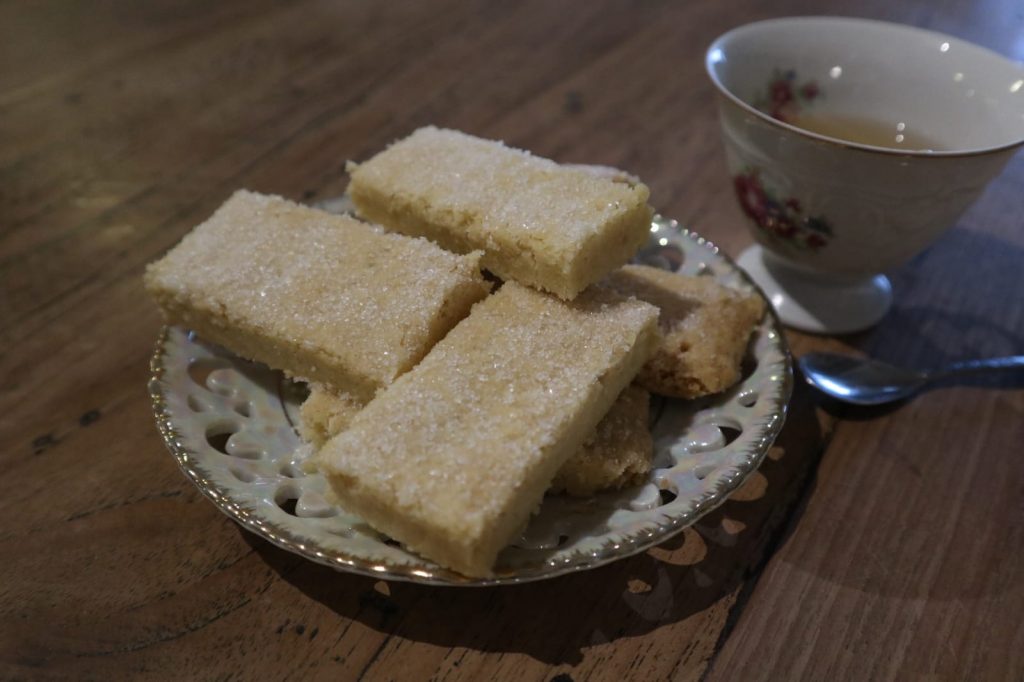This article was written by Lorin Posthumus, intern at eat!history. She also took the pictures for this blog.
Many historians believe that shortbread finds its origin in 12th century in Scotland, where it started as something called ‘biscuit bread’. These were biscuits made from left-over bread dough, which was sweetened and dried out until it became hard. However, they ascribe its more modern recipe to Mary Stuart, Queen of Scots, who reigned in the 16th century. She is said to have been very fond of Petticoat Tails, which is shortbread that is baked in a round shape and then cut up into pointy slices and have rigged edges. They thought the round shape resembled the pieces of fabric used to make a woman’s petticoat, hence the name Petticoat Tails.
The first printed shortbread recipe is said to come from a Scottish cookbook, written by Mrs McLintock in 1736. There are two copies left of this little cookbook. Half of the cookbook contains recipes for food preservation and there are recipes for savoury and sweet dishes.
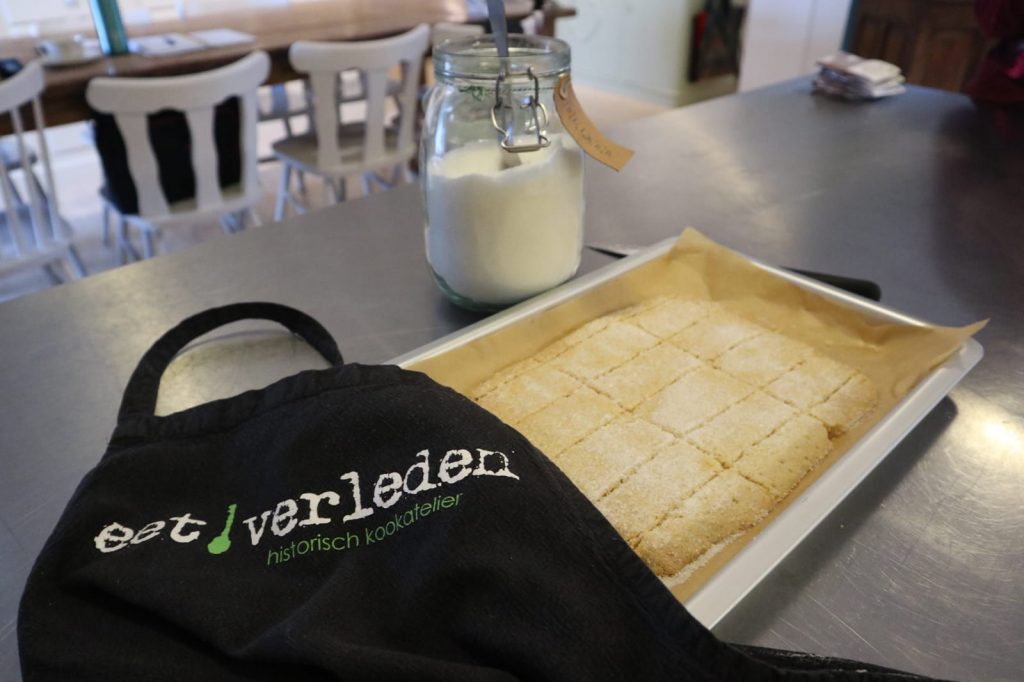
Origins of shortbread
Shortbread has three traditional shapes: petticoat tails, round biscuits and fingers. The first is the round shape mentioned above, the second version are individual, round-shaped biscuits and the last variation are rectangular shaped biscuits. Nowadays, shortbread is a cookie made from flour, sugar, butter, cornflour and a pinch of salt.
Shortbread is called shortbread because it is so crumbly. Another word for ‘crumbly’, when applied to pastries and biscuits, in the baking world is ‘short’. The cookies become crumbly because of the amount of butter that is added to them. Hence, why the fat that goes into shortbread is called ‘shortening’.
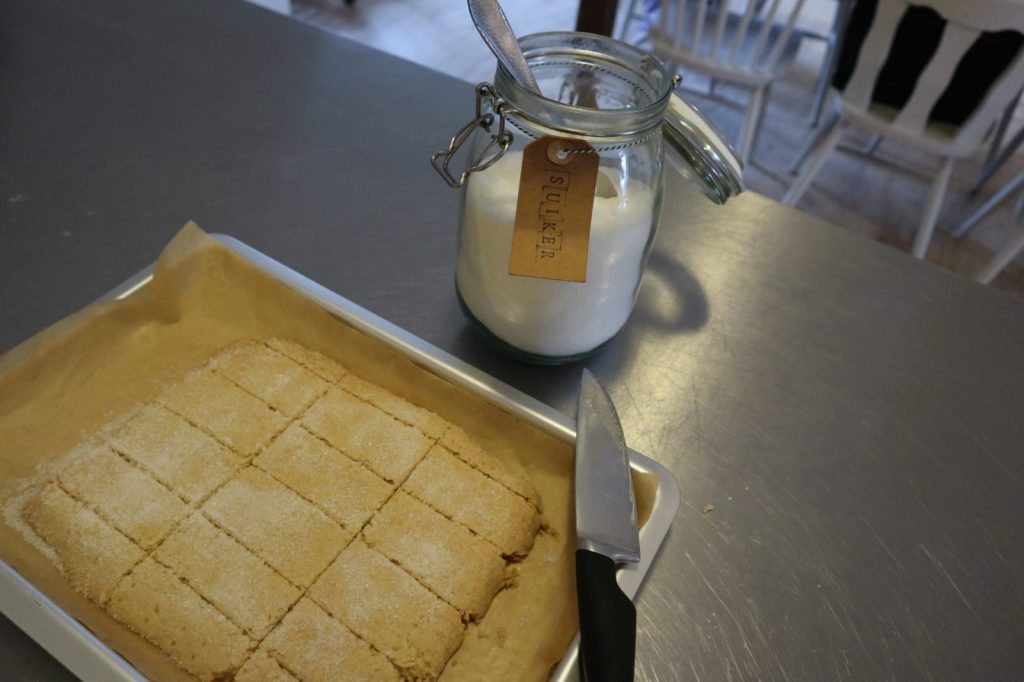
A traditional treat
Up until the 18th century, shortbread used to be only for the rich people, or a real luxury for the everyday civilian. It was so expensive because the leavening was exchanged for butter and the addition of sugar, making it expensive. The lesser off people only ate it on special festive days like Christmas or New Year. Another shortbread tradition is breaking a slab over a newlywed bride’s head. They believed that if the shortbread crumbled up when you break it, the marriage would be good and fruitful. This type of wedding cake or wedding shortbread was also called ‘infar cake’. It was broken over the head of the bride after all the other festivities were done and the bride and groom headed home.
Mrs Beeton’s shortbread
Mrs Beeton writes in het famous Book of Household Management this about shortbread:
Pilcaithly Bannock. Name of a kind of Scotch shortbread, consisting of flat round cakes, the paste being composed of flour, butter, sugar, almonds, peel, and caraway seed.
She also gives a recipe for Shortbread:
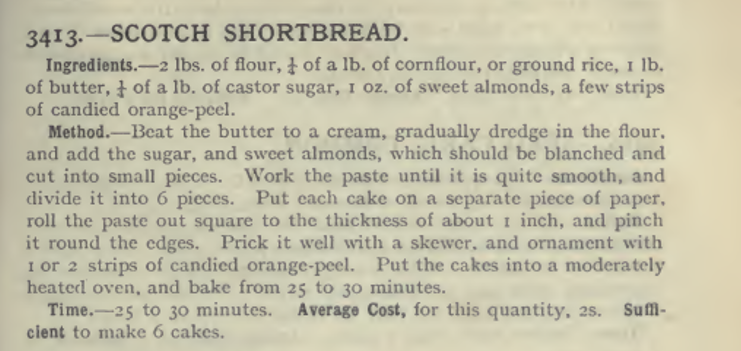
The recipe down below is inspired by Mrs Beeton’s recipe for Scottish Shortbread. We did not include the almonds in our version of the recipe. When we tested it, the almond did not make any difference in flavour and they made the dough even more crumbly, making it hard to handle. We also added more butter than Mrs Beeton mentioned because our dough would not form a cohesive dough. It looked more like a crumbly pie dough you would use for a cheesecake, perhaps.
Millionaire’s shortbread
A popular variation of shortbread is Millionaire’s Shortbread. This cookie has three layers: shortbread, caramel and chocolate on top. The treat first showed up in the 1970s and was considered ideal to refuel after long walks in the park, or as a treat with a nice cup of tea. Where this variation comes from exactly is not known, but it is said that the first millionaire’s shortbread can be found in the Australian Women’s Weekly. It is called millionaire’s shortbread presumably because combining the three layers makes it such a rich treat.
Perhaps the most famous kind of modern shortbread is from Walkers. The company has existed for over 100 years and started in the Speyside village of Aberlour, which is in the Scottish Highlands. They are still there to this day. Its founder, Joseph Walker, opened his company in 1898. They claim to still use Mr Walker’s recipe for shortbread and they also say that they do not use any artificial additives. The company makes other Scottish delicacy’s as well, but their main flagship remains the plain old shortbread fingers.
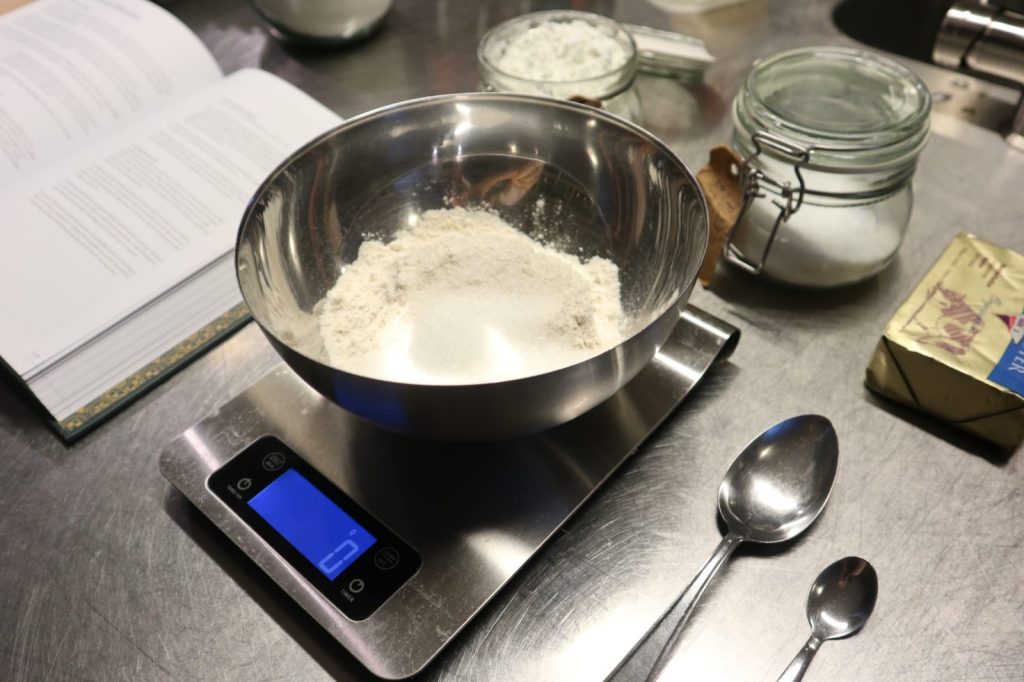
Ingredients:
250 g flour
25 g cornflour
180 g butter
25 g castor sugar
Pinch of salt
Preparation:
Soften the butter using a spoon. Add the flour, cornflour, salt and the sugar. Knead using your hands until it forms a crumbly dough. Keep on kneading until it forms a cohesive ball.
Roll it out and shape into the desired forms. For fingers, you spread the dough out over a baking tin and cut them when they come out of the oven. Let them cool completely before consuming them. For the round-shaped, you roll out the dough and use a cookie-cutter, or you press the dough into a round tin. Bake for 20 – 30 minutes at 160 °C. Be mindful not to let them get brown, shortbread is supposed to be pale looking. Enjoy!


